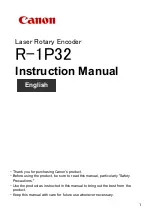
3.3 Test Results
The TIDA-060040 was tested in each of the three orientations discussed previously: On-axis, In-Plane, and
Off-Axis. The results from each orientation were then calibrated and a final error using controller calculations and
the internal CORDIC output are shown at angle steps of 0.25° for one full rotation.
3.3.1 Calibration Methods
After removing signal chain errors from the calculation, there are still several possible mechanical sources that
may impact the quality of the input magnetic field used to calculate angle:
•
Motor Shaft tilt
– results in an orthogonality error between TIDA-060040 and the rotating magnet. This
produces a fixed shift to the expected field alignment.
•
Motor Shaft offset
– results with the sensor in a different location and orientation than targeted. Depending
on the offset direction this can influence either peak input amplitude to or phase alignment of the inputs.
•
Magnet tilt
– results when the magnet is not installed orthogonally to the shaft rotation axis. The magnet
appears to wobble during rotation and produces a changing field orientation.
•
Magnet and Shaft Eccentricity
– results from either the axis of rotation not aligning to the center of the shaft
or the magnet not having its center aligned to the axis of rotation. This produces a lateral change of position
during rotation which impacts the B-field magnitude.
•
Soldering and assembly alignment errors
– Errors resulting from package alignment during solder-reflow
to tolerances when mounting the TIDA-060040 PCB may result in various orientation and position errors that
may similarly impact the phase and magnitude of the inputs
•
Near field behavior
– At close proximity to many magnet types, the magnetic field may produce a non-ideal
input for the sensor. The target input field is a purely sinusoidal waveform. The observed field when a sensor
is placed very close to a magnet will typically take on some degree of distortion which is dependent on the
magnet geometry.
All of the preceding errors combine to create non-linearity in the angle measurement. While these factors are not
predictable, they may combine to create a substantial error which, if unaccounted for, results with poor system
control. Given these factors it is necessary to implement a final calibration to resolve the resulting error for the
highest precision control.
Multi-point linearization is one useful approach and may be used to quickly adapt to system-to-system variations.
Consider the hypothetical error in
Figure 3-5. Cyclical Angle Error
In this example, a multi-point linearization captures the absolute error at any number of discrete points. The
controller then assumes a linear estimation of error between those points. As the number of points increases, the
accuracy of the estimation approaches the real error. When an approximation of the error for any given angle is
determined, it may then be directly subtracted from the measured angle.
Hardware, Software, Testing Requirements, and Test Results
Absolute Angle Encoder Reference Design With Hall-Effect Sensors for
Precise Motor Position Control
21
Copyright © 2022 Texas Instruments Incorporated













































